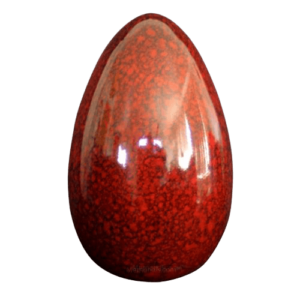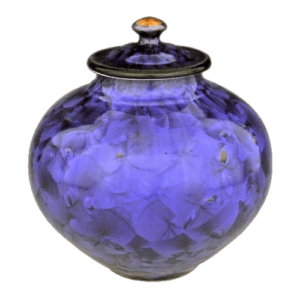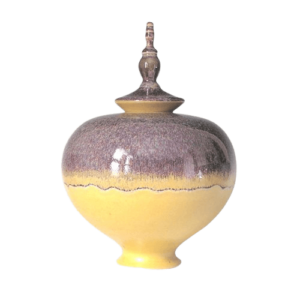Art Urns are in the Eye of the Beholder
Art urns are some of the most beautiful cremation urns in the world, and many are lovely enough to be featured in a museum. Each style gives visible insight into the artist’s personality, and such a variety allows individuals to create memorial tributes that are both elegant and sophisticated, while still befitting the personality of the dearly departed.

There was a time when almost all urns could rightly be called “art urns.” In ancient Greece and Rome, art urns were common, especially for athletes, statesmen, warriors, and others who were believed to have done something right for the community.
As Christianity spread, throughout the middle Ages, art urns likewise spread with them. Typical art urns from this period however emphasized a person’s faith in God rather than his good works. Like Medieval art in general, this reflected a growing emphasis on the heavenly realm, and the shrinking importance of this world. Throughout the 18th and 19th centuries, the era of the salon, art funeral urns became more affiliated with the wealthier classes. These art cremation urns featured leisurely looking gentlemen, presumably relaxing in heaven as they had in their miles of open backyard. An art urn for children would often depict them with cherub-like features, resting snugly in their cribs.
Today, with the advent of Modern and later Post-modern art, the art urn has likewise changed with the times. Art funeral urns today are somewhat less likely to include images of people in them, substituted for a broad array of colors instead. This is to emphasize the conceptual, the abstract, and the unconventional. Proponents of the modern techniques for art cremation urns argue that this helps them to better emphasize the many feelings and emotions associated with the loss of a loved one, the sadness of a loss, the hope of his eternal glory, happiness over the time spent with the deceased, and many others. Several examples demonstrate this trend in art urn design.

One, for example, is the “Circle of Love,” art funeral urn. This art cremation urn has a beautiful crystal circle, which, like love itself, seems to spill over in all directions. If one looks closely, they can even see the fins of dolphins. Below this is a black pewter box with room for the ashes.
Animals have also played a key role in modern art urns for ashes. Today, art funeral urns can be found with images of eagles, deer, cougars, wolves, and horses. Taking its cue from Native American cultures of the past, animals in modern America have come to symbolize personalities and character attributes.
One art urn in which this is particularly evident is the eagle art urn for ashes. Available in options ranging from brass, to crystal, to silver, this art cremation urn symbolizes freedom, adventure, and prosperity, all of which loved ones hope and believe that the departed will experience in the hereafter.
Flowers, which traditionally have also symbolized emotions and character traits, are likewise a key ingredient in many modern art urns for ashes. One art cremation urn in which this is apparent is the “Green Peace,” art urn. Dotted with the green of lilies, with just visible tinges of a bright blue sky, this urn for ashes symbolizes optimism on the part of loved ones that the departed has left this earth to go to a better place, where there is only beauty and light, and everything is lush and green.
Periods of the day, particularly sunrise, noon, and sunset have likewise come to have a particularly important place in the modern urn for ashes.
The “Carolyna,” is an art urn for ashes that exemplifies this trend. This art funeral urn, with its teal blue top, whitish brown middle, and dark brown bottom seems to symbolize the earth at daybreak. As the sun is just rising, and the clouds begin to show in the sky, a wide prism of colors breaks through the night in an absolutely luminous way, bursting into the attention of those on earth, as it cries out, “It’s morning!” This art cremation urn likewise reflects optimism, as loved ones remind themselves that a new day has dawned for the departed. It will be an eternally good day, in a place where there is no hunger, no sadness, and only light. Many art funeral urns today have also immolated geologic formations. If nature is anything, it is patient. The same earth that came into being 5 billion years ago, created modern humans less than a million years ago. Nature reminds loved ones to live each day in the moment, without trying to rush through it into the next.

An urn for ashes that describes this sentiment is the “Glacier,” art cremation urn. This art urn, with its bluish green bottom, and periwinkle blue top symbolize the slow and peaceful progression of a glacier, as it pushes its way through the sea. On the lid is a spiraling point. This is the “tip of the iceberg.” This teaches another lesson, not to be confined in vision to that which can be seen with the eyes. The departed is not gone, but has only travelled to the world of the unseen.
Many of the lessons known to the Orient are only now being learned by the West, but they are being learned in a big way when it comes to art cremation urns.
One example of this is the “Flora Bamboo,” art funeral urn. This art cremation urn with its earthy grey appearance, coupled with the image of leaves in the center, shows the harmony of nature. Loved ones who practice cremation understand this unity in the cycle of life. They choose to spread the departed’s ashes so that the departed might re-invigorate the ground, and the seed that grows from it, spurring on that cycle.
Art urns for ashes have come a long way over the course of the centuries, and each generation of art cremation urns has revealed something about the values of the culture from whence it came. Today, they are all about the experience of life.
